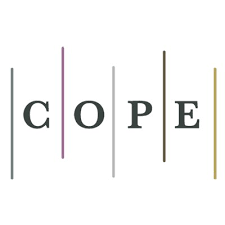Examining Dimensions and Components and Application of Supply Chain Financing (In Chain Stores)
DOI:
https://doi.org/10.52547/ijimes.2.4.81DOR:
https://dorl.net/dor/20.1001.1.27832678.2022.2.4.6.9Keywords:
Supply Chain Financing, Supply Chain, Chain Stores, Financing ManagementAbstract
Purpose: Supply Chain Finance (SCF) is a new approach in financing the working capital of economic enterprises, which can ultimately lead to economic growth and financial stability through efficient and smooth allocation of financial resources, improving financial risk management and increasing financial inclusion. Supply chain financing which runs parallel to the flow of goods and information, is common to all financing networks, and therefore it is important to understand its dimensions. The financing chain provides the cash flow needed to ensure the doors are kept open, the lights are on, employees are paid, and products are produced and shipped.
Methodology: To achieve this goal, SCF uses principles that have been effective in supply chain management (SCM) for decades. The core of this financing chain is to create an optimization plan that can simultaneously control all supply chain financial processes.
Findings: According to these cases, in this paper, considering the importance of managing the financial flow along the chain and using the principles and basics of research in the method of fact-finding and case study, an effort was made by examining the characteristics, dimensions and components of financing in the supply chain. As well as practical experiences in this field, a conceptual framework for the effective use of the financial flow management system as well as its principles and foundations should be provided.
Originality/Value: In this paper, we will examine dimensions and components and application of supply chain financing (in chain stores).
Downloads
References
Ghahremani-Nahr, J., Nozari, H., & Sadeghi, M. E. (2022). Investment modeling to study the performance of dynamic networks of insurance companies in Iran. Modern Research in Performance Evaluation, 1(2), 67-79.
Hofmann, E. (2005). Supply chain finance: some conceptual insights. Beiträge Zu Beschaffung Und Logistik, 16, 203-214.
Soni, G., Kumar, S., Mahto, R. V., Mangla, S. K., Mittal, M. L., & Lim, W. M. (2022). A decision-making framework for Industry 4.0 technology implementation: The case of FinTech and sustainable supply chain finance for SMEs. Technological Forecasting and Social Change, 180, 121686.
Nozari, H., Najafi, E., Fallah, M., & Hosseinzadeh Lotfi, F. (2019). Quantitative analysis of key performance indicators of green supply chain in FMCG industries using non-linear fuzzy method. Mathematics, 7(11), 1020.
Zhang, W., Yan, S., Li, J., Tian, X., & Yoshida, T. (2022). Credit risk prediction of SMEs in supply chain finance by fusing demographic and behavioral data. Transportation Research Part E: Logistics and Transportation Review, 158, 102611.
Nozari, H., Fallah, M., Kazemipoor, H., & Najafi, S. E. (2021). Big data analysis of IoT-based supply chain management considering FMCG industries. Бизнес-информатика, 15(1 (eng)), 78-96.
Nozari, H., Szmelter-Jarosz, A., & Ghahremani-Nahr, J. (2022). Analysis of the Challenges of Artificial Intelligence of Things (AIoT) for the Smart Supply Chain (Case Study: FMCG Industries). Sensors, 22(8), 2931.
Chen, X., Wang, C., & Li, S. (2022). The impact of supply chain finance on corporate social responsibility and creating shared value: A case from the emerging economy. Supply Chain Management: An International Journal.
Fallah, M., & Nozari, H. (2020). Quantitative analysis of cyber risks in IoT-based supply chain (FMCG industries). Journal of Decisions & Operations Research, 5(4).
Nozari, H., Fallah, M., Szmelter-Jarosz, A., & Krzemiński, M. (2021). Analysis of security criteria for IoT-based supply chain: a case study of FMCG industries. Central European Management Journal, 29(4), 149-171.
Ke, J., & Tang, Z. (2022). Innovation of Supply Chain Finance Model Based on Blockchain Technology. In International Conference on Cognitive based Information Processing and Applications (CIPA 2021) (pp. 680-686). Springer, Singapore.
Khajezadeh Dezfuli, H., & Nozari, H. (2021). Modeling and Comparison of Fuzzy and Non-Fuzzy Multi-Objective Evolution Optimization Portfolios in Tehran Stock Exchange. Journal of New Researches in Mathematics.
Soni, G., Kumar, S., Mahto, R. V., Mangla, S. K., Mittal, M. L., & Lim, W. M. (2022). A decision-making framework for Industry 4.0 technology implementation: The case of FinTech and sustainable supply chain finance for SMEs. Technological Forecasting and Social Change, 180, 121686.
Sadeghi, M. E., Nozari, H., Dezfoli, H. K., & Khajezadeh, M. (2021). Ranking of different of investment risk in high-tech projects using TOPSIS method in fuzzy environment based on linguistic variables. arXiv preprint arXiv:2111.14665.
Zhao, J., & Li, B. (2022). Credit risk assessment of small and medium-sized enterprises in supply chain finance based on SVM and BP neural network. Neural Computing and Applications, 1-12.
Published
How to Cite
Issue
Section
License
Copyright (c) 2022 Hadeel S. Obaid, javid G-Nahr, H. Nozari

This work is licensed under a Creative Commons Attribution 4.0 International License.












